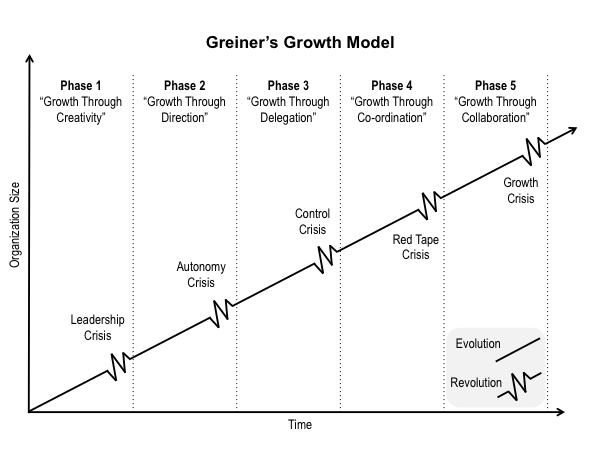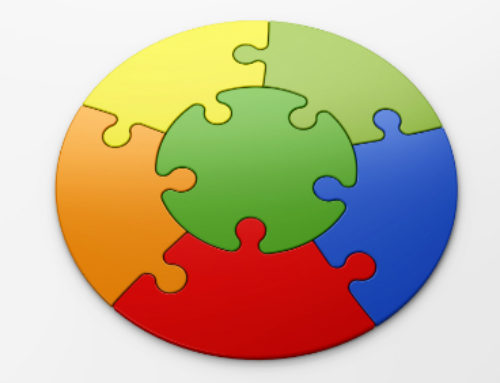Understanding the barriers to small business growth is important. Often small businesses concentrate on the external factors affecting growth but fail to recognise the important internal factors.
To grow your small business over time you will need to:
- Create: a product/service
- Manage (or Direct): the business
- Delegate: to employees
- Co-ordinate: activities
- Collaborate: flexibly across teams
Greiner’s organisational growth model (Larry Greiner, 1972) shown below consists of these 5 consecutive phases of business growth – Creativity, Direction (Management), Delegation, Co-ordination and Collaboration.
Within each phase of growth Greiner observed that there is a period of growth through evolution followed by a crisis and then a period of growth through revolution. To understand the model it is important to appreciate that each stage occurs as a result of the previous one.

This model can be used to identify which phase of growth your business is in and therefore to be aware of possible reasons for stagnation.
Leadership Crisis (Solution: Manage/Direct)
Working ‘in’ your business is not the same as working ‘on’ your business. In order to grow beyond the initial ‘Creativity’ phase will require management and leadership of the business. Someone needs to take the business from where it is to where you want it to be. It doesn’t have to be you but it does have to be someone.
Autonomy Crisis (Solution: Delegate)
Once you start managing the business itself and providing organisational direction it is normal to become more detached from the ‘coal face’. If people regularly cannot complete their work because they are waiting on you to approve something you are not delegating sufficiently. You must delegate to grow.
Control Crisis (Solution: Co-ordinate)
Having delegated responsibility to others it can feel like the business is heading in different directions all at the same time. You must therefore co-ordinate the activities of your employees by putting in place systems, processes and procedures that ensure that all activities are pursuing the business’s strategic plan.
Red Tape Crisis (Solution: Collaborate)
Having ensured that adequate controls are in place to keep all business activities co-ordinated there will eventually come a time when they will be viewed as overly bureaucratic and as a hinderance to problem solving and innovation. The business will then need to grow through a more flexible and behavioural approach to management. This will often take the form of cross-functional project teams who communicate regularly, less formally and who as a team can act with a greater degree of autonomy.
Summary
This growth model is dependent on the circumstances of each business. Some businesses will progress through the phases far quicker than others because of the industry that they are in while others may appear to deal with an issue in a different order. It should also be noted that growth in itself is not a strategic goal but rather the means to an end and therefore some businesses’ goals will include resisting growth.
However for the majority of you who wish to grow their businesses, the model remains a useful tool to examine your small business and identify ways to help set your business free.
© Business Set Free Ltd 2013
This is just one of many articles that you can find at BusinessSetFree.com or click to subscribe to our free e-newsletter.






